Feelin’ Good – Junior Parker
Gonna boogie…….til the break of day
I was a teenager when I started to buy Al Green LPs. The first one was called Al Green Gets Next To You, which had the eternal single Tired of Being Alone (see My Pop Life #101) and his stunning cover of the Temptations hit Can’t Get Next To You among the jewels. Al Green was my definition of soul music back then, and he is still, for me, the greatest singer of all time. Of course I love Aretha and Billie Holiday, Sarah Vaughan and Marvin Gaye, Otis Redding and Anita Baker. Maria Callas! Dionne Warwick!! But Al Green is in another zone.
My favourite LP of his is called Al Green Explores Your Mind. It looks like this.
I look at the green cover and every time I say Al Green Explodes Your Mind in my head. Because he does. Here we have Sha La La (Make Me Happy), One Night Stand, The City and the mighty Take Me To The River, written by Al with guitarist Teenie Hodges who played in the band alongside his brothers Leroy on bass and Charles on Hammond organ. All under the guidance and instinct of Willie Mitchell, who arranged and produced Al Green throughout the 60s and 70s up until that moment when Al renounced pop music after a terrible incident at his home in 1974. Al Green’s girlfriend Mary Woodson (a married woman with three children whom he had refused to marry) threw a pot of boiling grits over him then committed suicide. Two years later, calling it a “wake up call” Al Green renounced pop music and established his ministry in South Memphis at the Full Gospel Tabernacle Church. He only made gospel records for the next ten years.
All of this is background to this song which I only heard because of Al Green. On the opening to Take Me To The River as the Hodges brothers establish the groove, Al tells us that he is dedicating the song to “Little Junior Parker….a cousin of mine who’s gone on, but we’d like to carry on in his name.” The song is classic Al straddling the secular & the sexual with concerns for baptism & spiritual cleansing in the water : I wanna know, won’t you tell me? seems to be addressed to God, but who knows with Al. For such a powerful song to have such a dedication meant I had to follow up, eventually buying the single Feelin’ Good when I saw it in a record shop in Camden Town. It is a cracker and bursts out of the speakers like an explosion of joy.
I’ve never established if Little Junior Parker is actually Al Green’s cousin. But why not right? He was born in West Memphis, Arkansas – not so much across the tracks as across the Mississippi (and the state line) from Memphis, Tennessee. West Memphis was a seedbed for electrified blues in the 40s and 50s with Sonny Boy Williamson II being the elder among a group which included B.B. King, Howlin’ Wolf, Roscoe Gordon, and Johnny Ace. As a young man Junior Parker played harmonica like Sonny Boy and he would go on to become part of the Beale Streeters collective with B.B. King and Bobby ‘Blue’ Bland (see My Pop Life #28 Too Far Gone).
In 1951 he formed Little Junior Parker & The Blue Flames with Pat Hare and ace guitarist Floyd Murphy. They cut one single with Ike Turner on Modern Records in 1952, which led to being signed for Sam Phillips and Sun Records for whom he cut a few sides in 1953 including this one Feelin’ Good, (possibly inspired by John Lee Hooker’s Boogie Chillen?), the mighty Love My Baby and Mystery Train, the latter two combined and covered by Elvis Presley. They’re now both rockabilly standards. But the vast majority of his work was playing live on the radio and touring the South with The Blue Flames, and combinations of the above artists. Live R&B was very popular throughout the 1940s through to the 60s especially on the Chitlin Circuit through the southern states.

Pat Hare, standing (far right). South Carolina, 1952
Memphis is on the Mississippi River around halfway from New Orleans to Chicago. It is a major staging post for American music, and boasts the Stax Records Museum, Elvis Presley’s house Graceland, Sun Records, Beale Street, Al Green’s church and other hot spots. It was the scene for one of the great rip-offs of my life one December evening in 1988 when I was driving from Washington D.C. to Dallas to deliver a car. I’d just spent two nights in Nashville and visited Grand Ole Opry (see My Pop Life#83 Country Boy) and mucked about with two young women around the hotel pool playing with their (brand new!) camcorder. This is before mobile phones and so on. A brand new moment. Camcorders !! On the morning of the second day I drove to Memphis, just a few hours down the road, and went straight to Graceland and parked up in the parking lot alongside the modest white mansion house and grounds.
There was no line to get in and I didn’t get a guide as I recall. I started in the Jungle Room which was the first room Elvis decorated and furnished. It has a full-size pool table as its centrepiece, a juke box and a bar and you are reminded how young he was when he earned his first million. It made me like him more. Graceland is a charming snapshot of a moment in time when an electrifying young white boy who wore eye make up and was obsessed with music of all kinds broke the sound barrier and brought rock and roll through the colour bar to the white suburbs of America and the rest of the world. I wrote a bit about Elvis in My Pop Life #80 Heartbreak Hotel but I have to recommend to all of you the greatest book on the subject Last Train To Memphis written by Peter Guralnick which details the rise of Elvis Presley up to him being drafted into the US Army in March 1958 with scholarly detail, compassion and understanding. There is a second book which takes us from leaving the army up to his death called Careless Love. Both highly recommended.
I came out of Graceland and drove into downtown Memphis, had a look at the mighty Mississippi and then on to Sun Studios which is now a museum, and a shop of course. Bought some 45s. Can’t remember now which ones but I’d guess Elvis’ cover of Mystery Train was one of them.

who changes his name on each batch of recordings it seems

Had a bite to eat in the locality and decided to drive to The Lorraine Motel across town where Martin Luther King was murdered on April 4th 1968. It was fenced off, bleak and shrouded in sadness and an old black lady seemed to be guarding it with all of her soul. I later learned this was Jacqueline Smith who had stood there for over 20 years. She used to be desk clerk there, then became a resident. Now the Motel is the Memphis National Civil Rights Museum, but last time I checked Jacqueline was still there protesting the gentrification of the area, and the celebration of death over life among other things.
I drove south to find Al Green’s Full Gospel Tabernacle Church which I did. I have to remind you that this was all done using maps and addresses. No GoogleMaps, no StreetWise, Ways or SatNav. Got there. It was unoccupied. I paid my respects, went to find a bed for the night, checked into a motel, and then went out to Beale Street, home of the blues. Vibes. Live music everywhere, buskers, neon, beer. A fella on the street asks me if I want to buy a camcorder.
The suggestion is that it’s a knock-off, no questions asked. He was the Mack Man and I’m a fool so we went ahead and drove to a suburb of Memphis in my car whereupon I gave him $350 and off he went to get the camcorder, and never returned. Wow. What a damn fool. My neck prickled and a feeling not unlike embarrassment crept up my throat and across my face as my stomach sank into my bowels. Jesus H. Christ on ice WEPT. The other sections of this road trip can be accessed at My Pop Life #147 Lost Highway and there will be more, but I’ll just mention in passing where I ended up that night – The Arcade Diner, which is a black-owned diner in South Memphis (where Elvis Presley used to eat banana & peanut butter sandwiches) selling southern staples like grits, sweet potato pancakes, cheeseburgers, BLT etc. That did ‘sweet me’ and I nursed my wounds and the tragic loss of cash and made a plan to survive on the Mastercard from now on. It was touch and go because unbeknown to me it was close to its limit.
I didn’t visit West Memphis where Little Junior Parker hailed from and which was more of a birth of the blues location than Beale Street possibly, but it was where local white musicians like Steve Cropper, Donald ‘Duck’ Dunn and Charles “Packy” Axton would go to check the local rhythm & blues scene. They formed a band called The Mar-Kays (marquees) who recorded a steaming song called Last Night in 1961 (#3 in the US) which was released by Axton’s mother Estelle on Satellite Records – then Estelle and her brother Jim Stewart formed Stax Records named after them both, and Cropper and Dunn joined with two black musicians Al Clark on drums and Booker T Washington on keys to form Booker T & The MGs, the house band of the record label, the pride of Memphis. I am obsessed with Stax Records.
I really haven’t spent enough of my life in Memphis. Dropped in on the way back from Phoenix on that trip, delivering another car to Indianapolis from Dallas, very low on cash and with a credit card which had started terminally bouncing. I drove to the Arcade Diner and got there in time for dinner, lingered over the banana split and slept in the car outside. Woke up cold to snow at dawn and someone knocking on the car window. It was a local hooker desperate for work at 5.30am. It was surreal. I made my excuses and left, ie I started the engine and turned in the direction of Nashville.
When Al Green name-checked his cousin in 1974 Little Junior Parker had been dead for three years. At 39 years of age he had an operation on a brain tumor from which he didn’t wake up. Al Green talks about carrying on in his name, and two things join these artists for me – one, they like to talk in their records. Some of my favourite talking records include Are You Lonesome Tonight? by Elvis Presley
I wonder if you’re lonesome tonight? Y’know someone said that all the world’s a stage and each must play a part…fate had me playing in love with you as my sweetheart..
Axis Bold As Love has Jimi Hendrix muttering darkly
I’m the one who’s got to die when it’s time for me to die…so let me live my life the way I want to…
Then there’s the classic Stax cut Woman To Woman by Shirley Brown which opens with this
Barbara, this is Shirley you might not know who I am
But the reason I am calling you is because I was going through my old man’s pockets this morning
And I just happened to find your name and number
Pow. But then there’s Barry White the master who is almost always whispering sweet nothings into your ear in a voice two octaves below what I can manage. And here’s Little Junior Parker…
You know, the other day I was walkin’ down the street, I met an ol’ friend of mine
And we stop, we stop and get a little somethin’ to eat
And when I got through, I was: “Say, man, look a-here” – He said: “Yeah, Junior, what’s happening?”
I told him
and then he starts singing this ridiculous note which then goes higher and it is so thrilling as the John Lee Hooker-style guitar zips along beside him that the only word that can do justice to this pure moment is glee. And Al Green also is not averse to expressing pure glee quite liberally in his work. Bursting with glee at the ellipsis.
The only friend of mine who knows this song – as far as I’m aware – is Sir Nick Partridge who has always collected blues records as long as I’ve known him – we met in 1979 and were flatmates for a couple of years in West Hampstead with Pete Thomas and Sali Beresford. We still chat. If you are a buddy and I’ve under-rated your Little Junior Parker appreciation vibes, you may choose to comment below…
This is a joyful song. It is a song full of joy. We need more joy.




























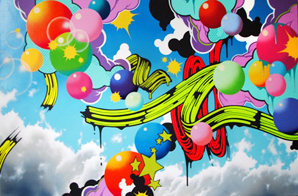

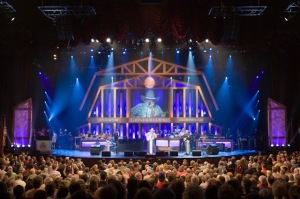
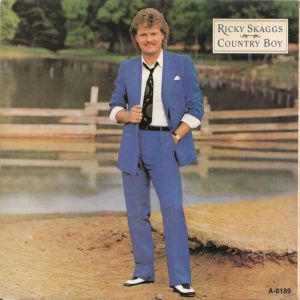
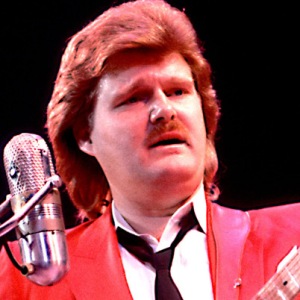

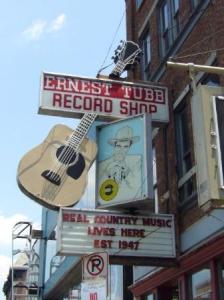 I went out to Ernest Tubbs Music Store in Nashville the next morning and bought the seven-inch single of Country Boy. A treasured possession. I am a country boy after all, Cambridge -born and Sussex bred, strong in the arm and thick in the head, despite my education, I am pretty thick in the head. A young soul, picking things up along the way – oh ! is that how it works? Right…. very little natural wisdom. Almost a naïf at times. I love the country, the seasons changing, the leaves, the insects, particularly the butterflies, the birds, the streams, the mud, the flowers, the hedgerows, the farms, the wind, the sky. It’s my natural habitat. I am a country boy at heart! Take it away Ricky.
I went out to Ernest Tubbs Music Store in Nashville the next morning and bought the seven-inch single of Country Boy. A treasured possession. I am a country boy after all, Cambridge -born and Sussex bred, strong in the arm and thick in the head, despite my education, I am pretty thick in the head. A young soul, picking things up along the way – oh ! is that how it works? Right…. very little natural wisdom. Almost a naïf at times. I love the country, the seasons changing, the leaves, the insects, particularly the butterflies, the birds, the streams, the mud, the flowers, the hedgerows, the farms, the wind, the sky. It’s my natural habitat. I am a country boy at heart! Take it away Ricky.